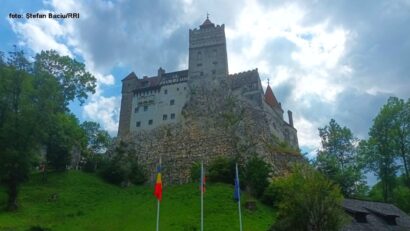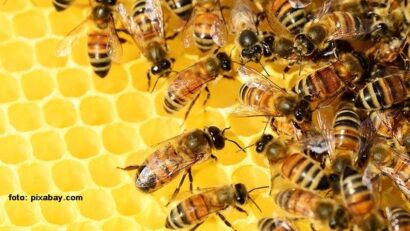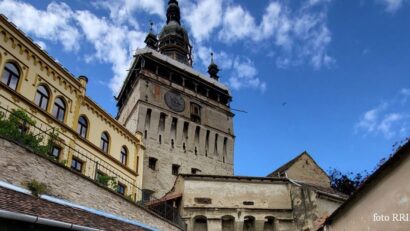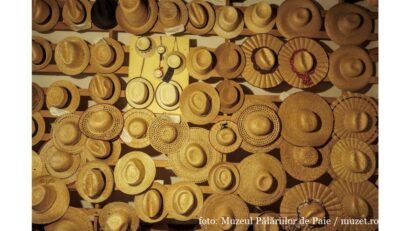Autumn in the Danube Delta
Before flowing into the Black Sea, the Danube, the second longest river in Europe, creates one of the most beautiful deltas in the world
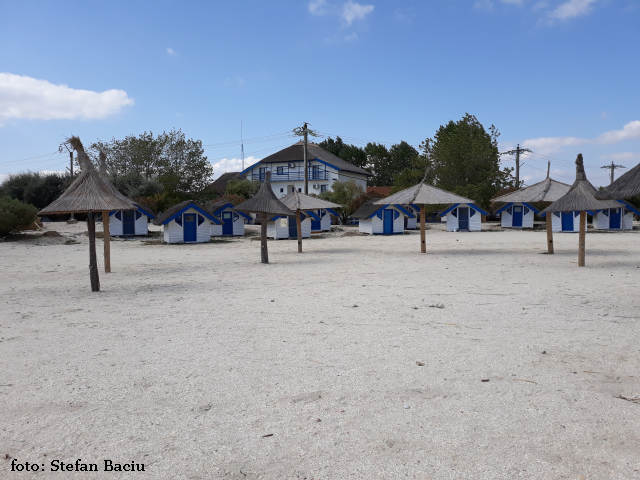
Ștefan Baciu, 21.10.2021, 13:16
Before flowing into the Black Sea, the Danube, the second longest river in Europe, creates one of the most beautiful deltas in the world. The Danube crosses ten countries and four capitals. The Danube Delta, which was declared a biosphere reserve in 1990, is one of the most important tourist destinations in Romania. The Danube Delta Biosphere Reserve, a major UNESCO heritage site, contains the Razim-Sinoe lagoon complex, and stretches over 580,000 ha. The Delta also consists of three major canals: Chilia, Sulina, and Sf. Gheorghe. The northernmost canal, Chilia, is 120 km long, and carries into the Black Sea almost 60% of the water in the Danube. The southernmost one, Sf. Gheorghe, almost 70 km long, allows deep river navigation. The middle canal, Sulina, 64 km long, is preferred by the European Commission of the Danube for blue water ship navigation, which led to correcting some bends and the deepening of the river bed, between 1862 and 1902. The increased maritime traffic on the Danube led to the economic rise of the town of Sulina, close to the Black Sea, the easternmost town in the EU. Between 1870 and 1938, the height of its prosperity, Sulina, called the Small Venice of the Orient, is a cosmopolitan town, with 7 consulates and 22 ethnic communities. Standing witness to that are the places of worship and the headstones in the old cemetery, the old lighthouse, and the palace of the European Commission of the Danube.
Most tourists visit the Delta in the summer, and, even with social distancing in place in the first eight months of this year, over 110,000 visitors came here, mostly Romanian. If not for COVID restrictions, more foreign tourists would have come here, based on pre-pandemic figures. The Delta, however, is attractive not only in the summer, but also in the autumn. The president of the Danube Delta Tourist Destination Management Association, Catalin Tibuleac, believes that the Delta is worth a visit in any season:
“The Delta is beautiful during any season, except maybe the winter. Most people visit during spring, summer, and early autumn, but the Delta is great at any time. During this season, it is fishermans heaven, with sports competitions and recreational fishing, with no pressure from family tourism. At the same time, lovers of photography find tranquility in the delta, with less tourism pressure either. These are two great activities during this time, not to mention visiting the canals, which are great even in winter. The change of colors in the environment is astonishing. During winter, ice fishing is available, or even skating the frozen canals.”
The autumn color vegetation, with the odd bird soaring, fish jumping out of the water, the specific scent of the bayou, which clings to clothing, these are all specific to the ambiance of the Danube. If you get there during a festival or a holiday, do not miss the beautiful traditional costumes of the members of folklore festival there.
“It is absolutely necessary for traditions, multiculturality, to be a part of the tourism product here. In the end, Delta tourism is biodiversity, nature, traditions, local food, multiculturality, they all blend for the tourist experience.”
In Jurilovca, in the southern part of the Delta, you can have a unique experience, where you saddle the Danube and the Black Sea in one go. You have to cross Golovita Lake, get in a boat, and disembark at Gura Portitei, a strip of sand that separates the water of the sea from the desalinized water of the lake. Here we met Laurentiu Niculae, manager of the tourism complex of traditional houses, all painted white and blue, with thatched roofs:
“Initially a fishing village and fish market, Gura Portitei, or Portita, Little Gate, is one of the most well hidden and tranquil beaches and tourist destinations on the Romanian seaside. Access is by boat from Jurilovca, or by speedboat. It takes about 20 minutes to get to this unique place in Europe. The name comes from the fact that it was the initial communication between the Golovita lagoon and the Black Sea. It was closed off in 1970, which turned Golovita into an enclosed lake, with water that was then desalinized. We are situated on this sand dune that separates the two worlds. The vacation village is the ideal place to admire the Danube Delta flora and fauna. Here we organize trips, also on the Black Sea coast, which we still call a virgin area. We try to preserve all the Delta values. During the high season, we have over folklore groups from the area. We try to preserve everything about local food, local crafts, and authentic folklore. During the autumn, tourism is also alive, mostly for fishing in the local lakes. In winter its harder, because we have to cross Golovita Lake, and some winters it freezes over.”
The distance between the lake and the sea is between 40 and 60 m, and during storms, the waters of the Black Sea wash over into the lake sometimes. A vacation to the Danube Delta is not complete without a sampling of the local traditional cuisine, most of them based on fish and seafood, of course. No matter the season, the Delta is a great destination for vacationers, amateur fishermen, and for birdwatchers and nature lovers. During this time of the year, the Delta becomes the seasonal home of arctic birds. Some of them spend only a day or two here to rest, the others spend the winter here. (CC)

